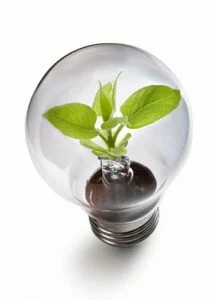 “We can create a more sustainable, cleaner and safer world by making wiser energy choices.”
- Robert Alan Silverstein
“We can create a more sustainable, cleaner and safer world by making wiser energy choices.”
- Robert Alan Silverstein
There looms a big question with the sudden uprising of LED lighting technology- can it translate to better more economical lighting for horticulture. The short answer is “yes.“ However, the more drawn-out explanation stands, “not right now.” There have been so many LED breakthroughs in the last five to ten years that most non-industry consumers think that LED technology is the answer for all things lighting, and some things non-lighting– one of the biggest industries being the food industry. Food is so important, and it should be so abundant, but there are too many mouths to feed, and frankly never enough money or power to be had (tangent). With rising food prices and a limited area to farm, governments and private companies everywhere have turned to indoor or greenhouse growing options for producing food in abundance year round. These options provide better control over environmental factors and pest/disease problems by controlling almost all factors of growth, including the most important, light energy.
Light is critical to a plants success because it is the primary source for the plants’ metabolism energy– a direct role in how well the plant grows, eventually leading to a high or low harvest index. The harvest index is the bottom line for crop farmers. In lieu of sunlight, farmers need artificial lighting, and light deprivation techniques to grow certain plant varieties. A proper lamp is needed for so many reasons, and efficiency seems to be on everyone’s mind.
HID or High Intensity Discharge lamps such as High Pressure Sodium and Metal Halides, are reaching a peak in efficiency. They emit an incredible amount of light in the appropriate spectra, but the cost is high electricity. This is where LEDs step into the picture, given only one or two steps for now. LED technology is rapidly improving and becoming more efficient. The amount of electrical energy needed to convert into light energy is becoming less and less. This translates into more light for less cost. On top of the efficiency, there are spectral benefits as well, including the possibility of engineering the most efficient lighting spectrum to grow plants, without wasting energy on color wavelengths that are not necessary to critical plant processes. The down side to LED lighting for horticultural application is the size of the diodes and coverage they offer. To effectively cover a large area such as a greenhouse, there needs to be an array of LEDs. Because LEDs are a point-source light, they are only really powerful in large quantities, with each diode emitting at the correct angle. Point-source lighting means they offer uni-directional illumination, where a traditional HID lamp effectively emits 360 degrees, and all from a single source. In this case, LED lights are better suited for visual illumination such as LED Bike Lights, LED Headlamps, LED Flashlights, or Off Road LED Lights. This type of lighting makes for great illumination effect, but is still lacking in the area of crop growth.
The first indoor and greenhouse plants grown under artificial light weren’t the best quality, and traditional growers probably criticized the early lighting setups like today’s HID growers criticize LED’s. We’re currently witnessing the beginning of a revolution in lighting that’s as significant as the one that originally allowed horticulture to move indoors.
When LEDs reach a point where they are emitting 320 or more lumens per watt, they will be considered for mass crop growth. At that point the energy needed from a single point-source light will begin to rival that of the HID systems now in use. Solid State Lighting (LEDs) is an excellent option for an energy saving-Green lighting market, but until there is a jump in efficiency, they most likely will not be a viable option for the Goliath food industry.
